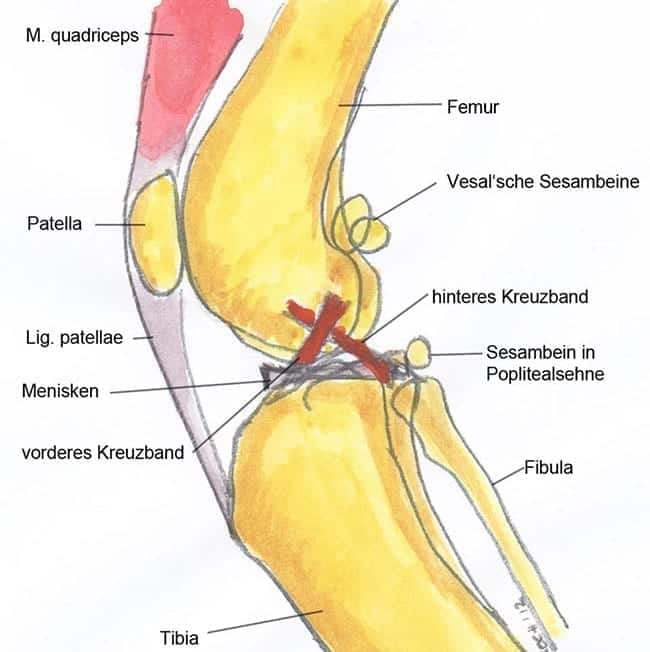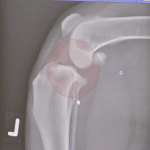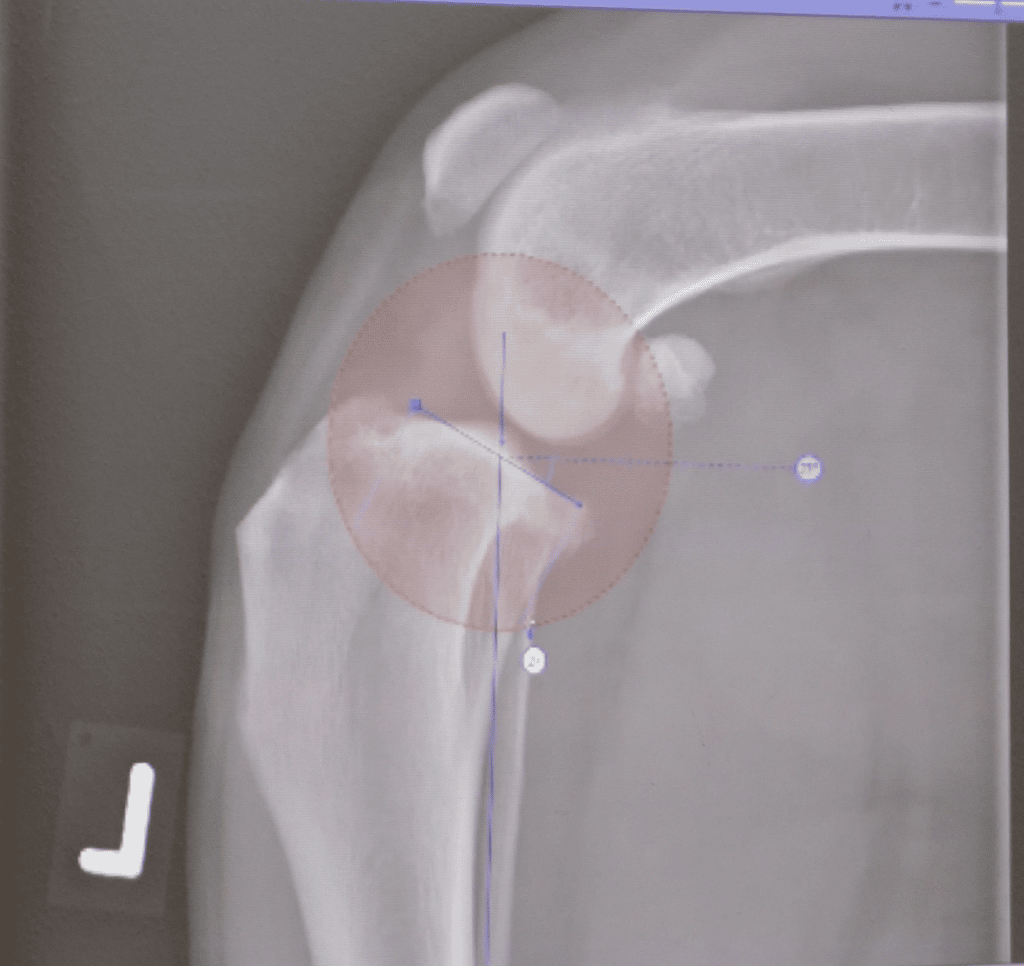A torn cruciate ligament is a serious knee injury that is very common in dogs. It can be very painful and should be treated immediately. In this article, we will discuss the symptoms of a torn cruciate ligament in dogs and what you as a dog owner should know about them.
What is a cruciate ligament tear?
A cruciate ligament tear in dogs is an injury to the cruciate ligament, which is located in the knee. The cruciate ligament is a band of connective tissue that connects the shinbone and femur and ensures that the knee joint remains stable. If the cruciate ligament tears, the knee becomes unstable and the following symptoms of a cruciate ligament tear in dogs may occur: pain and swelling.

Symptoms of a cruciate ligament tear in dogs
A torn cruciate ligament in dogs can cause a variety of symptoms. Symptoms of a torn cruciate ligament in dogs can include:
Limp
Dogs with a torn cruciate ligament often limp and put less strain on the affected leg. You can also limp or hold your leg up completely.
Pains
A torn cruciate ligament can be very painful. Your dog may whine or cry while walking and pull his leg up in pain.
swelling
The knee may swell and become hot. Bruising may also occur.
stiffness
Your dog may become stiff and have difficulty standing up.
Diagnosis of a cruciate ligament rupture
As soon as symptoms of a cruciate ligament tear in dogs have occurred, you should consult a veterinarian for a diagnosis. Diagnosing a torn cruciate ligament in dogs can be difficult. A veterinarian will perform a physical exam and examine the dog's knee. An x-ray may also be taken to rule out other injuries. However, an accurate diagnosis often requires a CT scan .
Treatment of a torn cruciate ligament
Treatment for a torn cruciate ligament in dogs depends on the severity of the injury. In most cases, surgery is recommended to repair the ACL. The dog must then rest and limit exercise. Physiotherapy may also be recommended to strengthen the affected leg.
How to prevent a cruciate ligament tear
There is no guarantee that your dog will not suffer a torn cruciate ligament. However, there are some things you can do to minimize the risk:
- Keep an eye on your dog's weight
- Avoid letting your dog walk on slippery surfaces
- Avoid letting your dog go up or down stairs for too long
- Avoid subjecting your dog to excessive physical stress
frequently asked Questions
What are the symptoms of a torn cruciate ligament in dogs?

- Lameness or limping, especially on a hind leg
- Pain when walking or touching the affected leg
- Swelling and warmth in the affected area
- Limitation in mobility or straightening the leg
- Cracking or crunching noise when moving the leg (sometimes heard)
Once you see the symptoms of a cruciate ligament tear in dogs, how do you examine it?

1. Physical examination:
The veterinarian will examine the dog for signs of lameness.
A dog with a torn cruciate ligament may limp or walk unevenly. 2. Manipulation test:
The veterinarian may also perform a manipulation test to see if the affected leg is unstable.
This can be done by gently moving the leg back and forth while the dog stands still. 3. Imaging Studies:
In some cases, it may be necessary to perform imaging studies such as X-rays or a CT scan to confirm the diagnosis and determine the degree of injury.
4. Differential Diagnosis:
It is also important to rule out other causes of lameness or difficulty walking, such as a knee sprain or hip dysplasia.
Can a dog with a torn cruciate ligament still walk?

Yes, a dog with a torn cruciate ligament can still walk.
However, how severely the dog is affected and how much pain he or she is in depends on the severity of the tear and other factors. However, it is important that a dog with a torn cruciate ligament is treated as quickly as possible to prevent further damage. While the symptoms of a cruciate ligament tear in dogs are not always clear, as shown above, in smaller dogs it can often not be noticed at all or only with close observation.
How can I help my dog recover after a cruciate ligament tear?

A dog's recovery from a cruciate ligament tear requires careful care from the owner.
Here are some steps that can help: 1. Limit activity: It is important to limit the dog's activity, especially in the first few weeks after the injury.
The dog should be kept in a small room or cage to limit its mobility and avoid injury. The dog should only go for short walks on a leash to minimize the strain on its joints. 2. Pain management: Dogs with a torn cruciate ligament can experience severe pain.
To relieve the pain, the vet may prescribe painkillers. It is important to administer the medication according to the veterinarian's instructions and monitor the dog for adverse side effects. 3. Physiotherapy: Physiotherapy can help speed up the dog's recovery.
This includes exercises to strengthen the muscles around the knee joint and improve mobility. However, physiotherapy should only be carried out under the supervision of a professional. 4. Nutrition: A balanced diet can help promote the dog's recovery.
Owners should ensure that their dog is fed a nutrient-dense diet tailored to their specific needs. Attention: It is important to pay attention to the dog's needs and give him plenty of attention.
Owners should ensure that the dog lives in a clean and comfortable environment and is brushed regularly to stimulate blood circulation and promote healing. 5. Monitor progress: Owners should monitor the dog's progress regularly and work closely with the veterinarian to ensure that the dog is progressing and all necessary measures are taken to ensure a quick and complete recovery.

